In Moulins, where stage costumes make the show
More than 10,000 theatre, opera and ballet costumes are kept at the France’s National Stage Costume Center (Centre national du costume de scène in Moulins). Far from being frozen in time, this unique museum strives to bring these works of art to life.
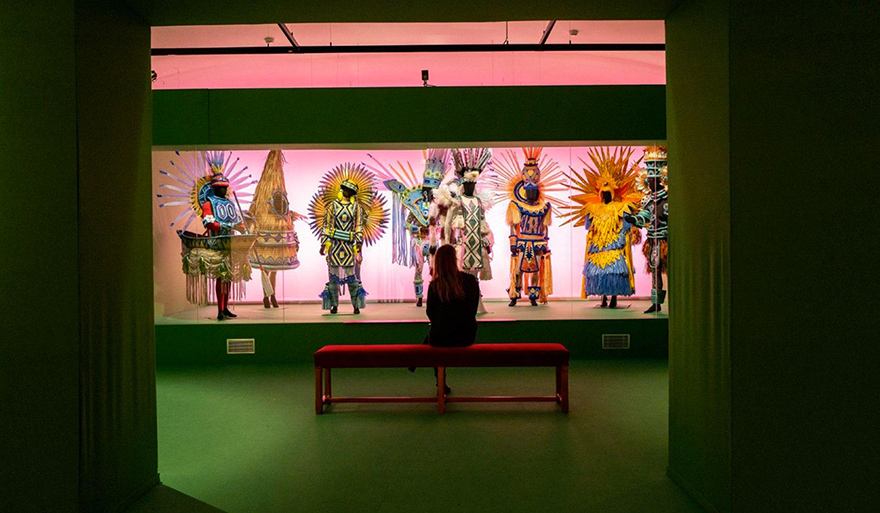
Moulins (France)
Margot pushes open a wide door, letting in fresh air. On the other side, the dimensions of the entrance room border on the excessive. An imposing staircase of yellow and pink sandstone supported by sturdy columns twists up several metres. "If this staircase had not existed, the entire building would have been destroyed, and there would have been no museum," says the woman who is in charge of communications at the National Centre for Stage Costumes (Centre National du Costume de Scène, CNCS) in Moulins, a town in France's Auvergne Rhône-Alpes region. "But the staircase was classified as a historical monument, and they renovated the building to make it what it is today."
The building that Margot François is talking about is the Quartier Villars: a former military barracks dating from the 18th century, which once housed a regiment of cavalry troops. Behind the martial, almost austere appearance, it has housed a museum full of fun and folly for over fifteen years. A museum dedicated to live performances and the conservation of costumes, which are displayed during exhibitions and workshops of all kinds.
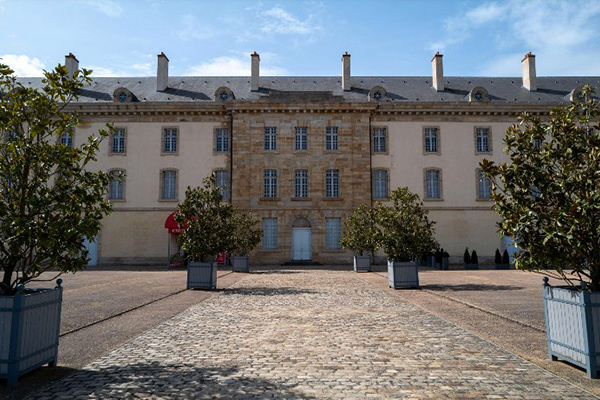
A living museum
The Quartier Villars, which seems straight out of a cloak-and-dagger movie, is far from being the only attraction of this "Musée de France". Nor are the 10,000-plus costumes in its storerooms. What makes it unique are also its exhibitions – one temporary, the other permanent. They are like a journey through time, a plunge into the performing arts, featuring costumes ancient and modern.
"Theatre, dance, circus arts, puppetry, opera, street performance: all of this is part of the performing arts," explains Margot, walking down a corridor on the ground floor towards the permanent exhibition. The lights are dimming. Only a few spotlights illuminate the magnificent ballet costumes, carefully displayed behind two large glass cases. "Here you can see the 'Nureyev Collection' all year round, a tribute to Rudolf Nureyev, considered to be the greatest male ballet dancer of the second half of the 20th century."
The costumes of Nureyev and his partners seem to float, full of life, on black backgrounds. The top of the doublets in The Nutcracker (1962) or Romeo in Romeo and Juliet (1977) have volume, gradually giving way to a fitted waist. "These are the real measurements of Rudolf Nureyev. The costumes were received flat and then a lot of work was done to make them suitable for display when worn, following the shape of the dancer's body."
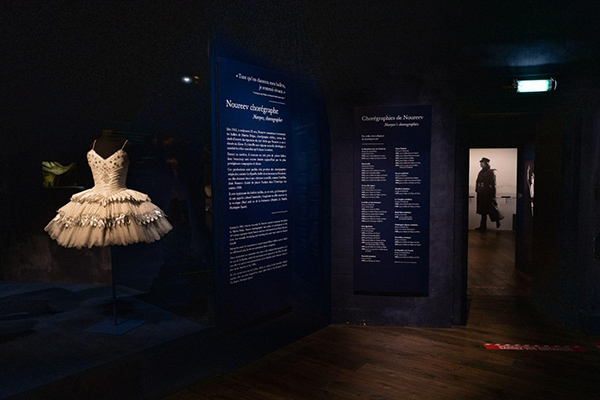
The second room is a veritable Ali Baba's cave. A hundred or so objects that belonged to Rudolf Nureyev adorn the walls and floor, showing all the influences that marked the life of the Russian star, who was exiled to France. From the imposing kimonos to the carpets and sculptures of the period, not forgetting his coat rack and engravings, we find ourselves immersed in the dancer's aesthetic. "Some of the pieces are fragile and are exhibited in alternation. So you can come to the museum several times without ever seeing the same thing," says Margot.
Coming several times also allows you to appreciate the richness of the museum's temporary exhibitions. Every five months or so, the CNCS honours a type of live performance and its costumes. Visitors are thus transported into various worlds, such as fairy tales or the costumes of pop and song, not forgetting the Rio Carnival, the current exhibition, on show until 30 April 2022.
On the first floor, you are greeted by an impressive scene. Deafening Brazilian music rings in your ears. The bright colours of the halls and costumes make your head spin. "Just like at carnivals," smiles Margot. "All the costumes here come from Rio, they have been lent to us by private individuals or by Samba schools."
The museum's mission is not only to promote stage costumes. It also has an educational role. By walking through the 13 rooms of this exhibition, we discover the workings of Rio’s mythical street show via several themes, presenting the artisans of the carnival. The "carnavalesco", designers of the costumes and floats; the "destaques", characters towering over the crowd with their expensive and sumptuous costumes; the "bate-bolas", with their intimidating and juvenile outfits; the "baianas" and their large crinoline dresses... In total, more than 120 costumes of carnival workers from different samba schools are on display.
The last room is spectacular. "It's just like the Rio Carnival: excessive," says Margot, sweeping her hand across the large room, a sort of "sambodrome" where an entire parade is reconstituted. This immersive space is part of the very identity of the museum. "The CNCS's strength is really this exhibition scenography", adds Delphine Pinasa, the director of the establishment.
"We are trying to give life back to the costumes"
On the floor above, laughter can be heard. About twenty children are dancing to the batucada, Brazilian rhythmic percussion. Around them, scraps of fabric and coloured pencils are strewn about. "To bring the objects on stage to life and talk about the performing arts, we set up a whole range of activities," explains Sandra Julien, who is in charge of educational activities for schools. "The discovery workshops are always linked to the temporary exhibition, they are part of a process of creating the show, to build a bridge between the objects and the public." Young and old alike can learn the rudiments of Brazilian dance or make a headdress similar to those they saw during their visit.
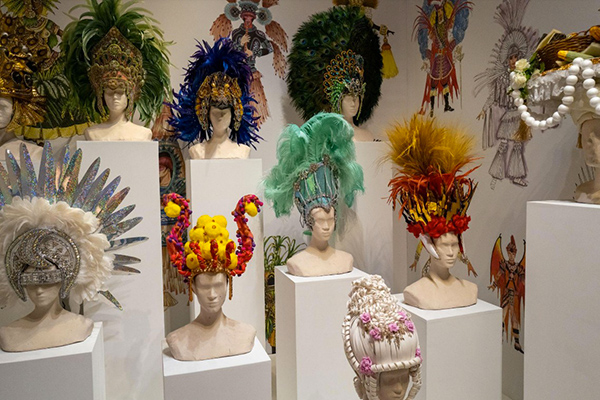
Like any museum, the CNCS also has its invisible part. Right next to the rooms open to the public, professionals work out of sight to bring the objects on display to life. "Our mission is to bring the costumes back to life, to give them a new look so that they shine in the exhibition rooms," explains Fabienne Sabarros-Helly, the director of the collection, seated at her desk where busts of different sizes have been cast.
"We try to find the right medium to present the costume each time. In fact, we take the opposite approach to that of the costume designers. They take the measurements and make a costume according to them; we start with the costume and recreate the body of the person who wore it," explains Fabienne. "In a sense, we make the costume of the invisible man. It's a job behind the scenes, and if you can't see it, it's because the work is well done."
Finding the right body is not an easy task. With each new costume, Fabienne has to immerse herself in the period for which it was designed. Using her knowledge and reading, she designs structures that give the illusion of looking at period bodies, without touching the costumes themselves. She applies this method to the wide range of outfits in the performing arts. "We might have historical, fashion, dance, circus or opera costumes, or even animal costumes, such as elephants or camels."
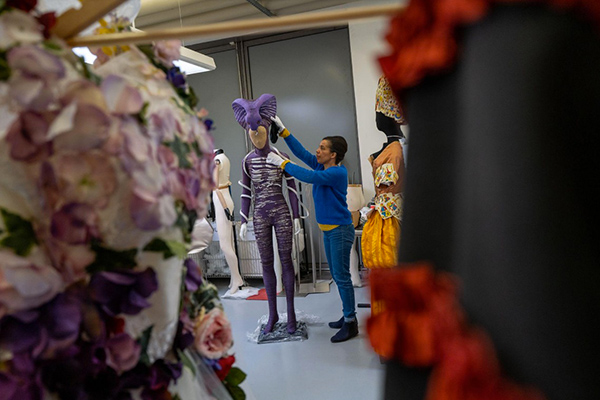
Stocks full to the brim
A few metres away, Garance is talking loudly, trying to cover the noise of a dusting machine. To no avail. The young woman finally decides to turn off the machine. "At the moment, we're going through our collections," says this conservation specialist, placing a period jacket on a hanger. Her playground is a huge room filled with imposing shelves, from which thousands of costumes and accessories overflow.
In total, the CNCS houses more than 20,000 pieces of a heritage collection made up of 10,000 stage costumes, plus set paintings. They are deposited by three national institutions, the National Library of France, the Comédie Française theatre company, and the Opéra de Paris, as well as numerous donations. This fantastic treasure trove makes the museum a unique place of its kind.
Walking through the corridors of the storeroom, one can see pieces made by the greatest couture workshops of different periods. "The oldest ones are waistcoats from the 18th century that belong to the archives of French theatre," adds Garance Torreilles, passing by painted costumes of Richard III, dating from the 1940s. The young woman stops to hold up a large silver coat. "This is a Macbeth by Thierry Mugler. An iconic piece."
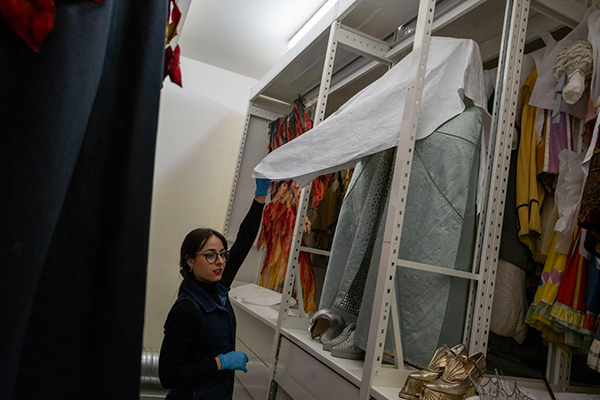
The CNCS's mission is to preserve and promote the collection through exhibitions and loans to other museums, notably the Louvre. But it also strives to enrich the collection on a daily basis. "We unfortunately can't take in everything," laments director Delphine Pinasa. "We try to take pieces that we don't have. The company's reputation also counts. Sometimes, when one of them closes, we are offered 300 costumes, meaning nearly 600 pieces. Often we only keep about thirty of them, otherwise we have volume problems."
The museum dreams of having more volume. Its reserves are full to bursting and are reaching total saturation. This is a major challenge for the CNCS team, which is banking on an extension to continue to move forward. The objective: to rehabilitate a historical monument that adjoins the former military site. This extension, co-financed by the European Regional Development Fund (ERDF) and due to be completed by the end of 2022, will make it possible to accommodate new collections, while creating a space more focused on theatrical scenography. It is a major step forward for the museum, which will thus take on a new role. The guiding principle will always be to tell the story of the performing arts.
 This article was produced as part of the Union Is Strength competition, organised by Slate.fr with the financial support of the European Union. The article reflects the views of the author and the European Commission cannot be held responsible for its content or use.
This article was produced as part of the Union Is Strength competition, organised by Slate.fr with the financial support of the European Union. The article reflects the views of the author and the European Commission cannot be held responsible for its content or use.